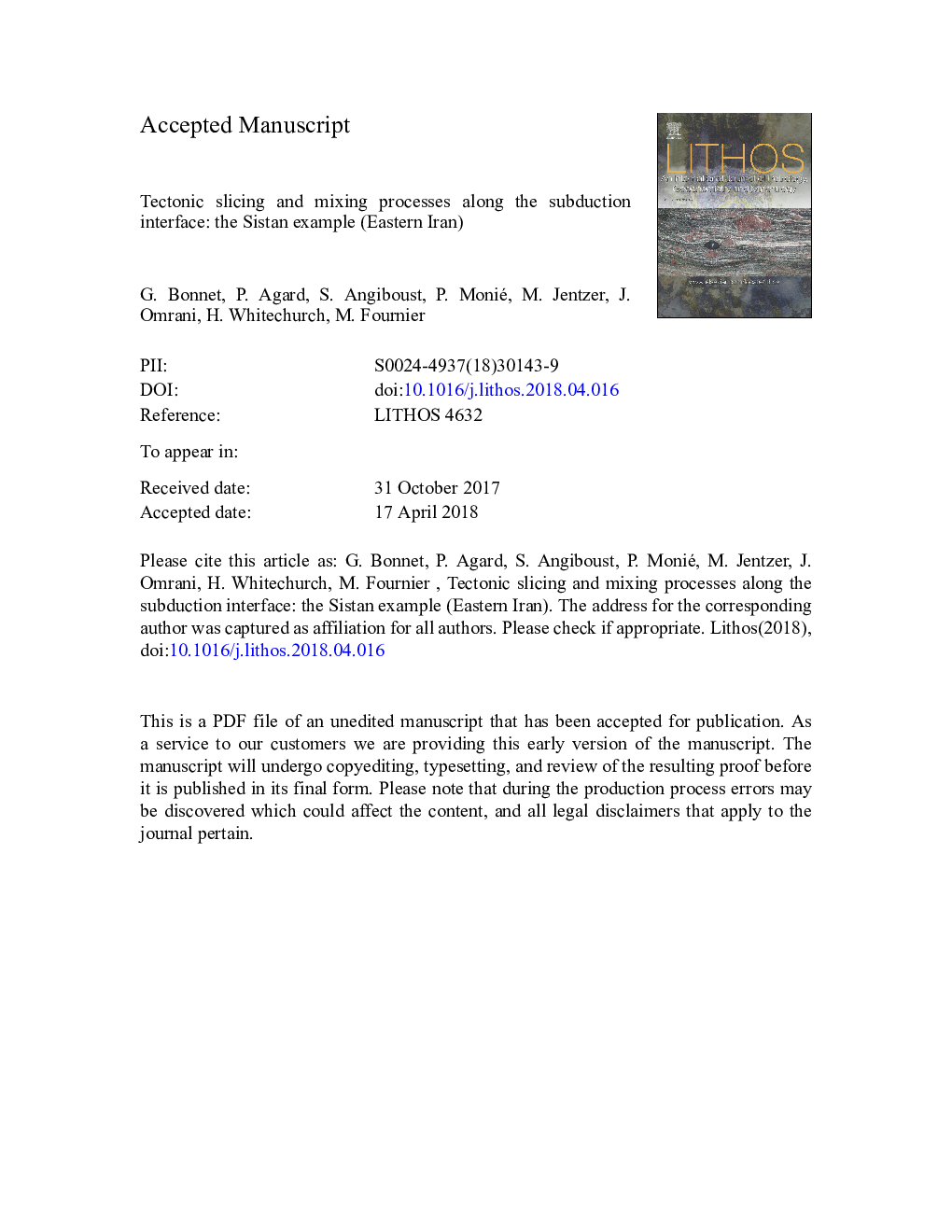| Article ID | Journal | Published Year | Pages | File Type |
|---|---|---|---|---|
| 8911618 | Lithos | 2018 | 68 Pages |
Abstract
Suture zones preserve metamorphosed relicts of subducted ocean floor later exhumed along the plate interface that can provide critical insights on subduction zone processes. Mélange-like units are exceptionally well-exposed in the Sistan suture (Eastern Iran), which results from the closure of a branch of the Neotethys between the Lut and Afghan continental blocks. High pressure rocks found in the inner part of the suture zone (i.e., Ratuk complex) around Gazik are herein compared to previously studied outcrops along the belt. Detailed field investigations and mapping allow the distinction of two kinds of subduction-related block-in-matrix units: a siliciclastic-matrix complex and a serpentinite-matrix complex. The siliciclastic-matrix complex includes barely metamorphosed blocks of serpentinized peridotite, radiolarite and basalt of maximum greenschist-facies grade (i.e., maximum temperature of 340â¯Â°C). The serpentinite-matrix complex includes blocks of various grades and lithologies: mafic eclogites, amphibolitized blueschists, blue-amphibole-bearing metacherts and aegirine-augite-albite rocks. Eclogites reached peak pressure conditions around 530â¯Â°C and 2.3â¯GPa and isothermal retrogression down to 530â¯Â°C and 0.9â¯GPa. Estimation of peak PT conditions for the other rocks are less-well constrained but suggest equilibration at Pâ¯<â¯1â¯GPa. Strikingly similar Ar-Ar ages of 86â¯Â±â¯3â¯Ma, along ~70â¯km, are obtained for phengite and amphibole from fourteen eclogite and amphibolitized blueschist blocks. Ages in Gazik are usually younger than further south (e.g., Sulabest), but there is little age difference between the various kinds of rocks. These results (radiometric ages, observed structures and rock types) support a tectonic origin of the serpentinite-matrix mélange and shed light on subduction zone dynamics, particularly on coeval detachment and exhumation mechanisms of slab-derived rocks.
Related Topics
Physical Sciences and Engineering
Earth and Planetary Sciences
Geochemistry and Petrology
Authors
G. Bonnet, P. Agard, S. Angiboust, P. Monié, M. Jentzer, J. Omrani, H. Whitechurch, M. Fournier,
